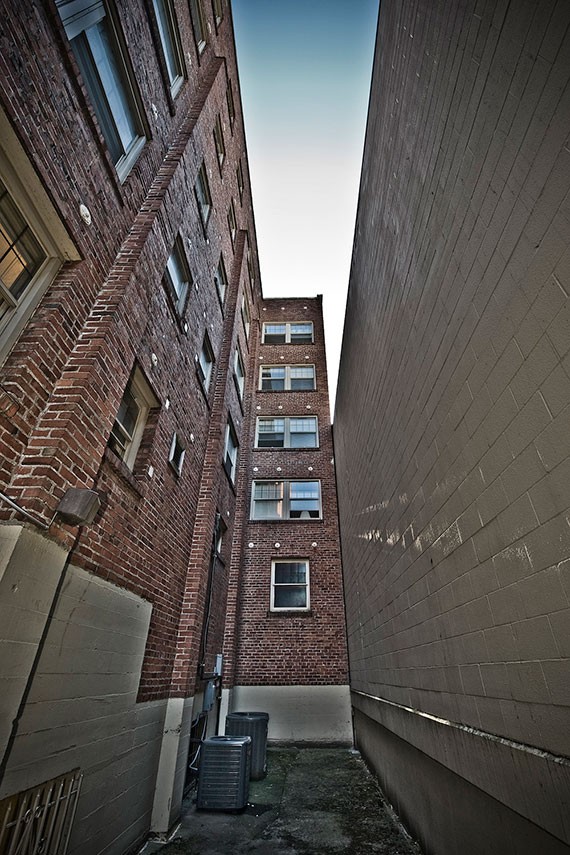You know that moment when you're in the middle of a hangout with your friends—slamming beers, intermittently hitting a bong, shoving chips into your mouth, binging old episodes of Project Runway—and suddenly a drunk-stoned realization overtakes you. Maybe all this eagerness to get and stay intoxicated comes from a place of deep unhappiness and frustration with a perceived lack of control over your life.
The characters in Simon Hanselmann's comics constantly wrestle with this moment. Instead of letting the smoke clear, going to bed, and shaking off this momentary recognition of existential anguish—they lean into it. With drugs, with drink, with darkness, with weird sex, with selfishness, with addiction, with a lack of empathy.
In his first-ever museum exhibition, Bad Gateway at Bellevue Arts Museum, the Tasmanian-born, Seattle-based artist displays drawings, sculptures, and every single page of his forthcoming book from Fantagraphics, also entitled Bad Gateway.
The most arresting element of the exhibition, however, are the four "vignettes," which are essentially dioramas featuring life-size versions of the characters from his books. There are small "scripts" on the walls near them that tell the viewer what to glean from these various setups. One features Megg (a long-nosed green witch) in bed in her unbelievably realistic messy room, surrounded by dirty laundry, cigarette butts, half-eaten pizza slices, and Diet Coke bottles full of piss. Another requires you to pull back a curtain to reveal a lingerie-clad Booger (a miserable and confused bogeyman) in a private moment in her bedroom, confronting the viewer, while a light flickers ominously in the corner.
Another places Megg, Mogg (her cat boyfriend), and Owl (a humanoid owl) on the couch, almost buried in filth, watching what sounds like Friends on a TV facing away from the viewer. Megg and Owl are made of repurposed mannequins found in BAM's storage. Mogg is painted tinfoil. I challenge viewers to try to find the packet of McDonald's Szechuan sauce hidden among all the trash.
"It's a commentary on toxic fandom," Hanselmann told me, referencing the clamor for the product after it was featured in the hit cartoon program Rick and Morty. "I've been saving that for a while."
While it's tempting to snap a picture of Megg in her trashy room and go "lol my life" (which, full disclosure, I did), this is not my life. I get stoned off a small amount of weed, try to keep my room tidy, and know when to stop drinking. Megg, Mogg, Owl, and company have difficulty dealing with those things.
As for the new book (coming out in July), the original art is displayed in full on one side of the gallery, all of the 176 pages are lined up in three rows that wrap around half the room. Meticulously inked with a Mitsubishi Uni Pin 01, then colored in with watercolor, gouache, and imported food coloring, these pages draw your attention to the level of detail and artistry behind Hanselmann's work. It's impossible to read the whole story just standing there (though do try, if you wish). But stepping back, you get a sense of the artist's ambition and vision, his diligence in exploring the dark recesses of his visual imagination.



















